Epsom salts, also known as magnesium sulfate, is a mineral compound widely used in gardening to boost plant growth. This inclusion in the gardening practices mainly comes from its high contents of magnesium and sulfur which are necessary nutrients for the development of plants. This article aims to provide a complete guide on how to use Epsom salt appropriately with different types of plants. We will examine the advantages of magnesium sulfate on plant health, explore optimal application rates and discuss certain situations where Epsom salt can be most effective . Gardeners can guarantee their plants get enough nutrients when they understand the recommended dosages and application methods.
Understanding the Right Amount of Epsom Salt for Plants

The appropriate quantity of Epsom salt to be used may vary depending on the kind of plant and its requirements. Common advice for general garden use is to mix 1 tablespoon of Epsom salt with 1 gallon of water, then apply this mixture once a month by pouring it into the soil around the plants’ base. However, for specific crops like tomatoes and peppers that require more magnesium, you can make foliar sprays by mixing 2 tablespoons of Epsom salts with one gallon of water and applying them every other week in order to supply the elements required by these plants through their leaves nonetheless, before adding any fertilizers such as Epsom salts, a soil test must be done first because your plants might just lack magnesium or sulfur which would only lead to nutrient imbalances hence harming them if too much of this fertilizer is applied.
Epsom Salt Requirement Influence Variables
Several factors affect the amount of Epsom salt required for optimal plant health. The most important factor is the type of plant being grown because each species has different nutritional needs. For example, tomatoes and peppers require more magnesium than other plants. Soil composition is yet another important factor: sandy soils tend to leach nutrients faster than clayey soils which would mean frequent application of Epsom salt for this kind of soils. On the other hand, clayey soils retain nutrients well and therefore may not need any additional supply with Epsom salts.
Additionally, soil nutrient status should be considered by conducting a soil test to check whether there is a deficiency in sulfur or magnesium ions and, hence, determine how much to apply for these specific cases. Also, rainfall and irrigation practices but also temperature affect the dilution of nutrients and uptake by plants. Foliar sprays should be made at appropriate concentrations such as 2 tablespoons of Epsom salt per 1 gallon of water and under protection from direct sunlight to avoid leaf burn.
Appropriate Amounts to Use for Different Varieties
When measuring Epsom salt for different varieties it becomes necessary to consider their exact requirements depending on their growth stages as well as nutritional needs. For instance, tomato foliage requires more magnesium compared with other plants; thus it is usually advised that one tablespoonful per one foot tall plant be put in every month during the growing season. Some green vegetables like spinach do not require much magnesium; hence every month only one teaspoonful should be sprinkled over each foot high crop such as lettuce or cabbage.
In general, when applying water treatment, it is advisable to mix about 1-2 tablespoons fulls with a gallon of water used for watering. For foliar sprays, 2 tablespoons of Epsom salt dissolved in 1 gallon of water can be used per two weeks; this should be done during the colder parts of the day to avoid leaf scorching.
In certain cases, these quantities may have to be increased or decreased based on a soil test showing considerable magnesium or sulfur deficits. For sandy soils, weekly applications at diluted strength might be better suited. Similarly, clay soils tend to hold more nutrients hence less frequent applications may be needed if any at all.
Benefits of Using Epsom Salt in Your Garden
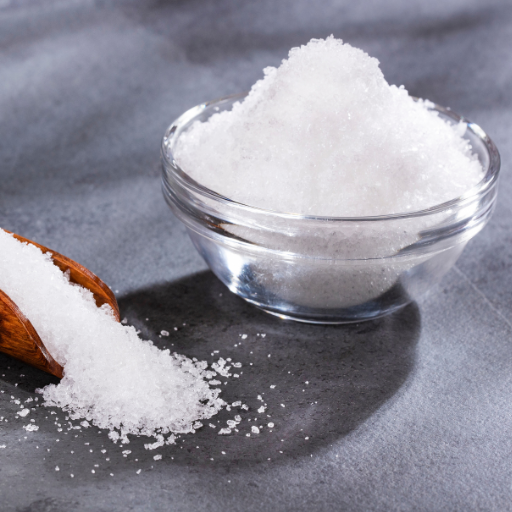
Magnesium sulfate, mainly composed of Epsom salt, has many advantages for garden plants. Magnesium is a very important element in photosynthesis, and its role is to help the production of chlorophyll, which is also needed for plant health and greenness. On the other hand, sulfur contained in Epsom salt facilitates synthesis of plant proteins, enzymes as well as vitamins. Frequent use of Epsom salts helps a lot in nutrient absorption by the plants, increasing the taste and yield of fruits and vegetables, and correcting Mg deficiency in soil. Moreover it has been noted that it can promote resistance towards diseases while keeping away pests from plants.
Expanding the Uptake of Nutrients with Epsom salt
A good use of Epsom salt can increase the uptake of nutrients greatly. The magnesium in Epsom salt is necessary to activate enzymes that facilitate nutrient intake. In addition, this mineral also enhances nitrogen fixation, which is essential for plant growth. Sulfate, another component, assists in making important amino acids and vitamins. This also improves soil’s nutrient profile and allows it to absorb more phosphorus and nitrogen thus increasing its depth as these elements are crucial for proper growth of plants. Thus, through the application of regularly applied products, overall availability of nutrient is optimized leading to healthier plants that are more productive.
The Role of Magnesium and Sulfur in Plant Health
Plant health relies on two very important micronutrients: magnesium and sulfur. In photosynthesis, magnesium is a central atom within chlorophyll molecule making it a critical element for this process. If there’s inadequate magnesium then sunlight cannot be turned into useful energy by plants efficiently. Moreover, different enzymes such as those involved in carbohydrate metabolism and nutrient absorption need an activator like Magnesium so that they can function; therefore energy production for plant development or growth can be realized since plants will produce enough energy needed during their life cycle when there is enough Mg (Magnesium) content in the body tissues. According to researches most crops require soil Mg concentration between 25-50 ppm.
On the other hand, sulfur is crucial for amino acid synthesis particularly cysteine and methionine which are the building blocks for proteins among others while it also constitutes some groupings in vitamins including biotin as well as thiamine thus parts being made up of components such as sulphur help form chloroplasts responsible for greenness; vigorous looks in general terms about plant healthiness generally speaking. Additionally it helps legumes fix nitrogen from the atmosphere into usable forms due to its role in sulfur. For example, the recommended sulfur levels in soil range from 10 to 30 ppm depending on the crop and the nature of soil.
Both magnesium and sulfur are very important for plants to develop a strong immune system and prevent them from succumbing to various diseases or being affected by environmental factors that may stress them; hence, they lead to a more sustainable garden ecosystem.
Epsom Salt’s Impact on Soil Quality
Epsom salt is magnesium sulfate (MgSO₄) and it affects soil quality because of its components namely magnesium and sulfur. This fertilizer can be dissolved in water before application into the ground so that these constituents can be readily supplied to the soil thereby enhancing its productivity. Among the roles played by Magnesium in a plant include chlorophyll production, thus improving photosynthesis and resulting in greater overall vigor. In addition, it helps synthesize proteins as a vital component of amino acids and vitamins required for boosting plant defenses. It has been revealed by investigations that Epsom salt when properly used can quickly address deficiencies of Mg since it is highly soluble and easily taken up through the roots.
Epsom salt is recommended in the rate of 1 tablespoon per gallon of water as a foliar spray or around the base of plants. The application rates for soil differ according to the crop and soil types but average between 1 and 2 pounds per 100 square feet. These treatments may raise soil magnesium level by ten to fifteen parts per million (ppm) and sulfur level by five to ten ppm, which will have immediate benefits on plant nutrition and soil structure. It is recommended that you do not apply it excessively so that you can avoid nutritional imbalances and stunted growth of plants. By using Epsom salt correctly following advice from an agronomist or specific crop requirements, quality content can be made from this basic input of magnesium and sulphur for soils that would help improve their status.
Applying Epsom Salt to Your Plants
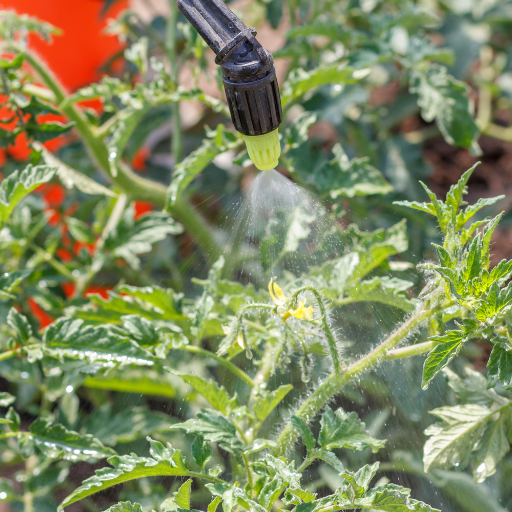
Start by doing a soil test to determine how much magnesium and sulfur is in the ground before you apply Epsom salt to your plants. For general garden usage, dissolve 1 tablespoon of Epsom salt in 1 gallon of water to make a standard solution directly applied as a foliar spray or poured around the base of plants. In terms of specific crops such as tomatoes and peppers, using 1 tablespoon of Epsom salt per foot of plant height every two weeks will enhance growth and yield. As for soil application, say lawns or larger garden beds, one should use 1-2 pounds of Epsom salts per 100 square feet ensuring even distribution. Proper watering post-applications will help effectively absorb nutrients. Always remember that it’s important not to overdo it by following instructions closely and monitoring plant reactions.
Foliar Spray: How to Prepare and Apply
Firstly, dissolve 1 tablespoonful of Epsom salt into one gallon of water to prepare an effective foliar spray involving Epsom salt. This makes a balanced mixture of magnesium and sulfur that are directly delivered through the leaves; hence, there is quick uptake, resulting in immediate benefits. Therefore ensure that the spray bottle or applicator being used is clean so as not to contaminate it with other substances.To get an even coating on the leaves, use a fine mist setting when applying it during early morning or late evening hours so that it does not burn them due to direct sun from its peak hours.
For best results, spray both sides (tops and undersides)of leaves for complete coverage of the entire plant. This not only maximizes nutrient uptake but also prevents potential deficiencies in most cases. You should repeat the process every fortnight for most plants, varying depending on your crop needs and their response when done.
Soil Drench: Proper Techniques and Ratios
Essentially, this is another efficient way through which important nutrients are passed directly into the root zone of plants. So, take 1 gallon of water and dissolve 1 tablespoonful of Epsom salt to make a soil drench with Epsom salts. This series ensures that there is enough magnesium and sulfur supply which are essential in different plant functions such as production of chlorophyll and absorption of nutrients. On the other hand, if large application areas are to be considered, the ratio can be scaled up without altering its proportion. For instance, when 16 gallons of water is mixed with one cupful of Epsom salt it can serve an expanded area.
While applying the soil drench, pour the solution around at the base evenly, ensuring enough moisture is reached in the root zone. By this method nutrients get rapidly absorbed by plant roots resulting in healthier growth and increased yield . Therefore apply every four to six weeks following response from your crops to avoid chances of poor nutrition or excessive manuring. Adjusting this will depend on frequency and concentration against specific plant requirements and soil conditions also have their say.
When and how many times to apply Epsom salt
Epsom salt can be used on plants at several stages of growth, depending on the crop’s specific needs. This applies to most plants such as vegetables, flowers, and houseplants which should have one tablespoon of Epsom salt in a gallon of water applied once per month as a soil drench. This monthly application helps maintain adequate levels of magnesium and sulfur that are critical for protein synthesis, enzyme function, and chlorophyll production.
It is best to make the first application at planting time for tomatoes and peppers. Prior to this, cover the soil with about 1 tablespoon dry Epsom salt and sprinkle it into the planting hole. Following this, every two weeks, a foliar spray (1 tablespoon per gallon of water) can be applied for continued nutrient supply.
Roses benefit from being given Epsom salts three times a year—in spring, summer and fall—to promote healthy growth and flowering. Use same concentration for soil drenches i.e., 1 tablespoon per gallon or dissolve ½ cup in one gallon of water that will be used as highly concentrated foliar spray.
Epsom salt may also be spread over lawns at a rate of 3 pounds per 1,250 square feet preferably in early spring or late summer. To ensure even distribution dissolve the Epsom salt in water or use a broadcast spreader.
It is important to monitor both plant health and soil conditions regularly. Excessive amounts of nutrients can cause nutrient imbalances; hence, it is necessary to adjust the frequency and concentration based on plant responses. Always have your soil tested before making any changes so that you know what nutrients are already available.
Using Epsom Salt for Specific Plants
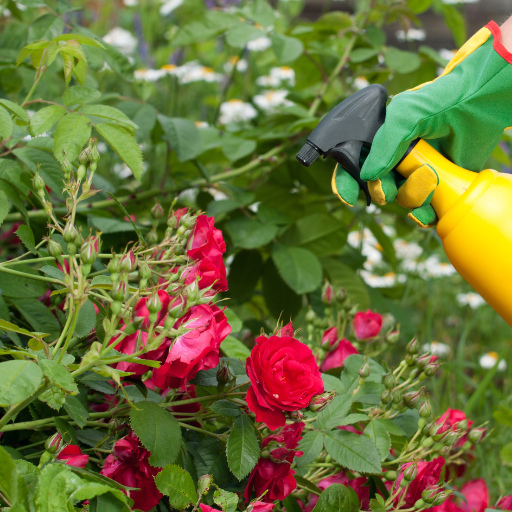
Epsom salt, or magnesium sulfate, plays various gardening roles to improve plant health and growth. In cucumber plants, it can control the magnesium deficiency, which is characterized by yellow leaves with green veins. After two weeks, apply a soil drench consisting of 1 tablespoon in every gallon of water.
On the other hand, using Epsom salt for peppers improves the production of larger fruits and prevents blossom end rot by supplying magnesium and sulfur. To achieve the best outcome, add 1 tablespoon directly into the planting hole followed by intermittent foliar sprays (1 tablespoon per gallon of water) every fortnight.
In roses, on the other hand , Epsom salt facilitates new cane production and increases flowering. The soil should be drenched with a solution made from one-table spoonful of Epsom salt mixed with a gallon of water thrice a year; spring summer and autumn respectively . Moreover this can also be achieved by foliar spray (1/2 cup of Epsom Salt per gallon water) during blooming season.
When it comes to potted plants, an occasional application of Epsom salt is necessary to prevent nutrient depletion. Use 2 tablespoons per gallon of water for monthly watering ensuring even distribution without over-watering.
For palm trees that require ample amounts of magnesium for survival, occasionally applying Epsom salts at two pounds per tree mixed into the soil followed by deep watering will help control frond yellowing and promote strong growth.
Always observe plants for specific nutrient needs and adjust Epsom salt applications based on plant performance and soil test results so as not to exceed recommended dosage levels or lead to imbalances between nutrients in the soil.
Vegetable Gardens Needing Epsom Salts
There are several ways to use Epsom salts in vegetable gardens. One notable contribution is providing essential nutrients like magnesium and sulfur, which are vital elements in crop growing. Magnesium is needed in photosynthesis as it helps in chlorophyll production, while sulfur supports enzyme function and overall plant metabolism.
Epsom salts heal common problems on tomato plants, such as yellowing leaves from a lack of magnesium. This involves mixing 1 tablespoon of Epsom salt per gallon of water and using this solution as a foliar spray every two weeks. It is also useful to add one tablespoonful of Epsom salt to the soil at the base of each plant during the growing season to raise nutrient uptake and fruit quality.
Epsom salts can be applied to cultivation beans and leafy greens to promote strong growth. If a deficiency is likely to arise, a bi-weekly foliar spray made by dissolving one table spoonful in a gallon of water can be applied.
Magnesium is essential for proper root system development when growing root vegetables like carrots or radishes. To ensure nutrients are readily available, fertilize row feet with 1 tablespoon Epsom salt mixed with soil prior to planting time.
However, it’s important to gauge soil’s magnesium levels before applying excessive amounts that will lead to imbalances. To make sure we get maximum use from Epsom Salt on your garden, have your soil tested so you know what exactly your plants need instead of wasting them where they are not required thus resulting ineffectiveness on plant health.
Gains of Flowering Plants and Roses
Magnesium deficiencies, which frustrate their growth and ability to blossom, can be dealt with well by Epsom salt, thus improving the performance of flowering plants and roses. Applying Epsom salt will increase foliage coverage, make it greener, and make blooms look vibrant. The procedure for roses entails mixing one tablespoonfuls of Epsom salt with a gallon of water, applying it on each bush or as foliar spray every 14 days during growing season. They are besides, adding 1 tablespoonful of Epsom salt per plant around the growing area while planting can also assist in nutrient uptake—especially when you scatter it on the soil.
One should not overdo it in terms of technicalities. Soil testing will let one know how much magnesium is present before using Epsom salts to correct this situation. Observing leaf color changes and checking for increased growth helps to determine how much should be applied at any given period. With these guidelines, flower gardeners can achieve improved health, output, and aesthetic value of flowers.
Fruit Trees’ Use of Epsom Salt
Fruit trees greatly benefit from applying Epsom salt, which addresses magnesium deficiencies related to fruit production and quality. One should use a foliar spray or soil incorporation method involving Epsom salt. A gallon is used after dissolving one table spoon full of Epsom salts in water every two weeks on leaves during the growing season as a normal spray method into leaves. This way guarantees immediate entrance into plants through the leaves.
For soil application, sprinkle one cupful of Epsom salts around the base of mature trees (usually 9-12 years old), spreading evenly within the drip line (the space below the tree’s canopy). For smaller trees, use approximately half cupfuls. Gently mix them with water into the soil, uprooting thoroughly to facilitate the slow absorption of magnesium by the root.
Too much application is not good as this results into nutrient imbalances and the soils become unproductive. Thus, soil testing reveals what magnesium levels are currently in place, guiding on how much Epsom salt to apply. A visual check on leaf color and fruit development can also help ascertain the plants’ current level of magnesium—and, depending on it, decide whether there is a need for more or less Epsom salt. Complying with these measures will enable gardeners to effectively enhance the total well-being and productivity of their fruit trees.
Epsom Salt for Potted Plants and Indoor Gardening
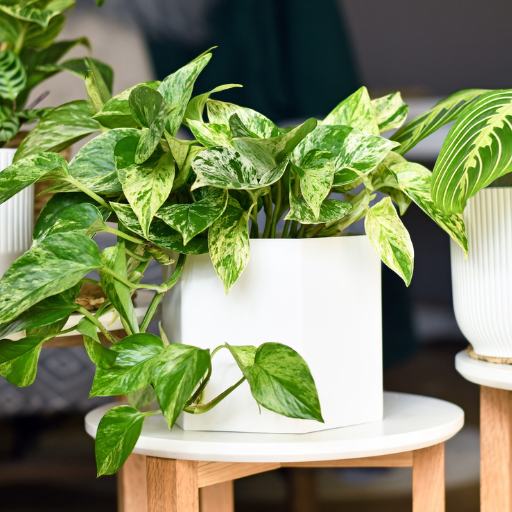
Adding Epsom salt to potted plants and indoor gardening practices can greatly improve their health by providing essential magnesium and sulfur. A common practice for potted plants is to dissolve two tablespoons of Epsom salts in a gallon of water, drenching the soil with it once a month. This helps prevent magnesium deficiencies that may present as yellow leaves and stunted growth.
Foliar sprays provide a quick way of delivering nutrients directly into the plant tissues in indoor gardening. For foliar application, dissolve 1 teaspoonful of Epsom salts in every quart of water you use, then spray all over the leaves, ensuring thorough coverage. Apply this every four to six weeks so that there is a continuous supply of nutrients, resulting in the development of lush green foliage and healthy vigorous growth.
However, it is important not to apply too much Epsom salt to potted and indoor plants because that will create nutrient imbalances that could damage them. Regular monitoring for good health condition and occasional soil tests are necessary when using Epsom salt, which helps ensure optimal care and nutrient provision for the plants.
Dosage Guidelines for Houseplants
For regular care involving Epsom salt on houseplants there are specific guidelines on recommended dosages that should be observed since failure to do so may cause adverse effects. Dissolve 2 tablespoonsfuls of Epsom salts in one gallon of water as top sources advise it for this solution to be used monthly. Foliar sprays should be done after dissolving 1 teaspoonfuls per quart of water every four to six weeks interval period. In this case, sufficient amounts magnesium are delivered without any risk of nutrient excesses or deficiency hence promoting healthy growth due to greener leaves.
Observing how well your plant responds after applying these products is important. Signs such as dark green leaves with steady growth rates indicate that the right quantities have been applied. Conversely, indicators of overdoing it may be drooping, leaf burning, and stunted growth, hence requiring a change in the frequency or concentration of Epsom salt solution. In such a context, soil analysis should be periodically done to monitor nutrient balance and adjust accordingly.
Benefits and Considerations for Potted Plants
Incorporating Epsom salts as part of potted plant care has many advantages. Magnesium sulfate, the active ingredient in this salt, promotes chlorophyll synthesis for better photosynthesis, leading to more luxuriant green leaves. Moreover, it enhances nutrient absorption, thus improving the ability of plants to take up major mineral elements like nitrogen and phosphorous, which can result in improved vegetative growth and flowering in some species.
However there are some things worth considering here. Excessive use of Epsom salts may lead to poor calcium and potassium balances that could lead to burnt leaves or stunted growth. It is important to remember that not every plant requires an equal amount of magnesium and sulfur; therefore, a one-size-fits-all approach will not work effectively.Dosages need optimum adjustment through a consistent assessment of soils as well as plants’ performance. This would ensure that too much magnesium does not interfere with the uptake of other vital nutrients; hence they must be controlled based on indicators from healthy plants.
Shunning Overuse in Closed Spaces
To evade excessive use of Epsom salt in confined spaces, begin with lesser quantities and observe the reaction of plants then increase it gradually. A good starting place, usually, is to dissolve one tablespoon of Epsom salt into a gallon of water and apply it once every month. It may be necessary to make alterations based on regular checks on plant health and soil conditions. To reduce the danger of imbalanced nutrients, this can also involve mixing up Epsom salts with other nutrients to create a holistic nutrient management plan that considers balanced fertilization. Furthermore, maintaining proper drainage and soil aeration in pots can help prevent the building up of salts thereby promoting robust plant growth.
Troubleshooting Epsom Salt Use in Gardening
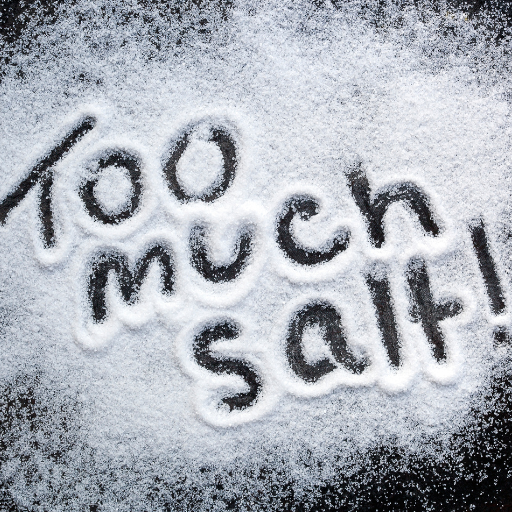
Epsom salt use in gardening can be made to have normal or excessive use by looking at common symptoms. Some symptoms of excessive Epsom salt application include leaf yellowing or browning, stunted growth, and salt crusts on soil surfaces. The excess salts should be leached out of the soils through flushing them with enough water. Under such circumstances, soil tests for checking magnesium levels and other nutrient concentrations may be necessary. In case there is any deficiency instead of excesses, it is recommended that Epsom salt be gently reintroduced at lower concentrations as this helps monitor its responses in plants.
To avoid these problems a balanced fertilization regime must be implemented which supplies all essential nutrients so as to discourage any imbalance thus enabling healthier garden ecology.
Recognizing Signs of Overuse and Imbalance
As a result, different signs indicate overuse of Epsom salt for gardening purposes. Chlorosis is one of the most common indicators where leaves turn yellow because they stop producing chlorophyll; however, necrosis—when the tip or edge of leaves appear brownish in coloration—is another indication regarding too much utilization. Another frequent sign is stunting, which usually occurs due to an imbalance of some vital nutrients, inhibiting a plant’s development process. In addition, presence of white salt crust on topsoil implies build-up of excessive salts.
In order to address these issues it would be important for one to carry out a soil test properly. The concentration level in parts per million (ppm) can measure magnesium using standard soil tests being done during analysis time. Healthy soil magnesium levels for most plants typically fall between 25 to 50 ppm. If readings exceed this range, flushing the soil with large volume of water will help leach out surplus salts. Gypsum may also be used to improve soil structure and drainage while helping remove excess salt from the ground. It is therefore advisable to gradually reintroduce Epsom salt at lower concentrations such as one teaspoon per gallon of water while closely monitoring plant responses in order to determine a deficiency.
A balanced fertilization regime that includes macronutrients like nitrogen (N), phosphorus (P), and potassium (K) as well as micronutrients ensures all necessary elements are provided in the right proportions. To achieve balance, it would be better to monitor some specific figures such as NMS levels. These actions are backed by sound technical parameters, thus fostering healthier garden ecology.
Adjusting Epsom Salt Application for Optimal Results
When adjusting Epsom salt application, take it slow so that you do not over-supply your plants with nutrients they do not need. Begin with a mixture of one tablespoon of Epsom salt and one gallon of water, which should be applied onto the soil every 4-6 weeks. In case foliar is used for purposes of spraying directly on leaves, more diluted mix can also be preferred e.g., this may be one teaspoon per gallon of water. This helps maximize nutrient uptake by ensuring that applications coincide with the growing season. Incremental adjustments shall then be made based on observed responses and soil test results hence regular checkups must be performed on plant health and soil magnesium levels. Also use other essential macro- and micronutrients along with Epsom salts to obtain a complete profile
Might Epsom Salt Solve Regular Agricultural Issues?
The magnesium sulfate in Epsom salt can correct a number of regular plant problems by fixing the lack of magnesium indicated by leaves turning yellow and stunted growth. Magnesium is critical for chlorophyll, which is essential to photosynthesis. Furthermore, it assists in flowering and fruiting, as well as nutrient uptake and increased vigor of plants growing under suboptimal conditions. However, although it may be beneficial in some situations, too much can cause imbalance of nutrients. Therefore, it must be used with care applying principles of soil tests. This will ensure its appropriateness to the plants without any adverse effect.
Reference sources
Frequently Asked Questions (FAQs)
Q: How much Epsom salt should I use for my plants?
A: The general recommendation is to use two tablespoons of Epsom salt per gallon of water. This solution can be used as a foliar spray or watered directly into the soil every two to four weeks.
Q: Is Epsom salt good for all types of plants?
A: While many plants can benefit from Epsom salt, not all plants need or like it. It is often said Epsom salt is good for tomatoes, peppers, and roses. Always research specific plant needs before adding it to your garden.
Q: How do I apply Epsom salt to my tomato plants?
A: For tomato plants, you can add one tablespoon of Epsom salt around the base of each plant every two weeks. Alternatively, dissolve it in water and use as a spray to help plants grow bushier and greener.
Q: Can I add Epsom salt directly to garden soil?
A: Yes, you can put Epsom salt directly into your garden soil. Use sparingly and evenly distribute the salt to avoid over-fertilizing, which can lead to poor plant health.
Q: How often should I use Epsom salt on plants?
A: Epsom salt can be used every two to four weeks. The frequency depends on your specific plant needs and the garden soil conditions.
Q: What are the benefits of using Epsom salt in the garden?
A: Epsom salt can enhance green color, aid in seed germination, and help plants grow bushier. It is also known to improve the uptake of nutrients like nitrogen and phosphorus.
Q: Can using too much Epsom salt harm my plants?
A: Yes, excessive use of Epsom salt can harm plants. Overuse can lead to nutrient imbalances and potentially toxify the soil. It’s important to use only the recommended amounts to ensure plant health.
Q: How does Epsom salt help with plant nutrition?
A: Epsom salt is magnesium sulfate, and magnesium is an essential nutrient that helps plants with photosynthesis, improving nutrient uptake and overall health.
Q: What is a quick method to apply Epsom salt to plants?
A: A quick method is to dissolve two tablespoons of Epsom salt in a gallon of water and use this solution to water your plants or as a foliar spray. This ensures that the salt is readily available for plant absorption.






